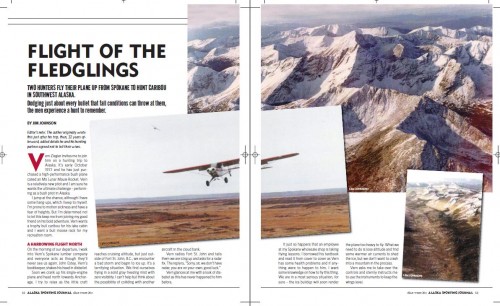Marty Raney Thriving On The Home Front
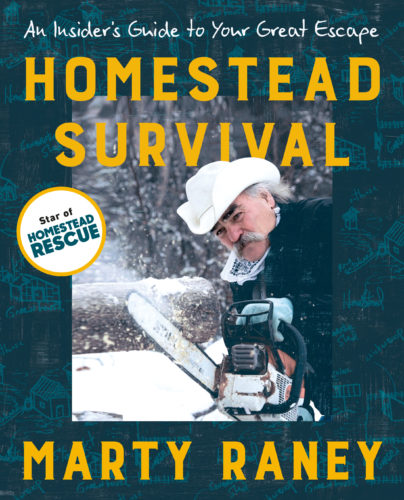
The following appears in the November issue of Alaska Sporting Journal:
Editor’s note: In his new book, Marty Raney says he leads two lives. “One is my Alaskan life, where I work as a contractor while striving to live simply and self-sufficiently on a rugged, 40-acre homestead that has challenged me like no other,” Raney writes. “My second life finds me traversing North America, answering the calls of prospective homesteaders who have reached out to me for a helping hand with their own (seemingly insurmountable) challenges that they’ve encountered while pursuing a simpler life.”
Raney, who wasn’t sure what he was getting into years ago when he left his suburban Seattle, Washington youth for the rugged hinterlands of the Last Frontier, has not only thrived living off the grid but he also assists others who long for that same experience. When we first introduced you to Raney (Alaska Sporting Journal, July 2016), he was embarking on a new Discovery Channel series, Homestead Rescue (we also profiled Raney’s daughter and series regular Misty in ASJ’s November 2017 issue). The show is now going strong in season nine.
But as the Raneys’ show illustrates, homesteading can be a tough life – Raney and his wife Mollee had to rebuild their Alaska cabin on their 40-acre property in Southcentral’s Hatcher Pass following a devastating fire that was chronicled on a 2021 episode – but it’s also a fulfilling one, including the benefits of harvesting wild game and fish.
The following is excerpted from Homestead Survival: An Insider’s Guide to Your Great Escape, by Marty Raney, with permission from publisher TarcherPerigee, an imprint of Penguin Random House.
BY MARTY RANEY
I’ve heard that “vegan” was actually an old Native American word that meant (when translated) “bad hunter.” But if you are not vegan (defined by its more common definition), you may find an organic, healthy, protein-rich food source is literally at your fingertips, or trigger fingertip, that is.
A subsistence lifestyle often includes harvesting your own wild game, from free-ranging turkeys to moose. And speaking of moose, I had moose tacos last night at the cabin with freshly harvested home- stead potatoes and veggies. Epic.
Moose, caribou, Dall sheep (and mountain goats), and lots of salmon have supplemented our garden and greenhouse table settings for nearly 50 years in Alaska. It doesn’t take much research before you become wary of the meat sold at your local market.
Chicken, pork, and beef have “processed” derivatives that have been proven harmful to humans (for example, lunch meats). Did you know moose have 1 percent (or less) fat? Compare that to 35 to 55 percent fat in store-bought poultry, pork and beef. Moose is high in potassium, low in sodium and has a list of vitamin and mineral benefits. And, at 100 calories per 100-gram serving, it is the original lean cuisine. Bear in mind that you will need some fat in your diet in order to digest protein.
A strange thought, I know: Most on-grid people have to worry about getting too much fat, but if you are truly off-grid, you may have the opposite problem and find yourself with too little fat. We need fat in order to fully digest protein, which is why extreme survivalists prize fatty beaver, bear, or porcupine meat (some old-timers still refer to protein poisoning as rabbit starvation or caribou sickness). It’s a balance.

THERE ARE 200,000 MOOSE and 750,000 caribou in Alaska, with only 7,000 moose being harvested annually. These two species have allowed Native people to survive for centuries in this harsh land known as Alaska. And today, we too choose to “live off the land,” as Alaska still is quite bountiful in moose, caribou, and salmon populations. I see it as a humbling privilege to live in a place where you can make your own choice as to what ends up on your dinner table. Again, where did this fast-food chicken sandwich come from? What’s the origin of this (whopping…) drive-thru burger? Every moose, caribou, Dall sheep or mountain goat that we’ve ever taken was standing in a pristine wilderness setting, eating healthy, organic willows, lichen, or assorted wild grasses. They were not crowded en masse, stressed or treated inhumanely. Hunting is not for everyone, but it is a way of life for many Alaskans leading a subsistence lifestyle.
I am not a sport hunter, but in my quest to live an off-grid, self-sufficient, subsistence lifestyle in Alaska, I’ve accepted the fact that hunting has been a long-time, inseparable part of living this lifestyle. As we go into winter, our freezer is full of moose and salmon. For that, and to them, I am truly thankful. For the most part the hunting community understands that more people is a good thing (there are always exceptions to this rule, of course). The more people who adopt a subsistence-hunting lifestyle, the more likely it is that land will be preserved and left undeveloped, that animal herds will be managed and culled responsibly, and that hunting will continue to be viewed as a positive thing to be supported and promoted by the local community. Whether you’re involved or not, someone is going to hunt those animals. Park service people will get those cull numbers, with or without you. So you can either take advantage of this fact or relinquish your share of the best meat money can(’t) buy.
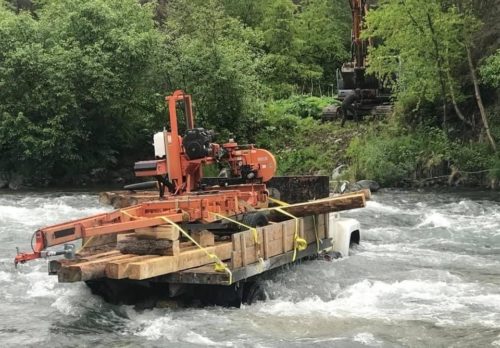
IF YOU ARE GOING to hunt, you have to hunt with respect for the animals, the natural world and the other humans you might see (or more problematically, not see) out there. Part of this respect is fully processing the kill, and butchering and packing out all the meat you can from the carcass. There are a lot of hunters who are far less interested in the hard, dirty work of butchering than they are in seeking trophies for stories to share in the coming days. Not cool, and frankly you are missing the point if you leave meat behind when you walk out of the wilderness. Look at the regulations. It’s illegal and called “wanton waste.”
My son Miles, the vegan, will skin and butcher a moose or caribou until the carcass is white. Every muscle or organ is gone, loaded up in our backpacks or however we are packing it out. So, be a serious hunter. Understand that harvesting animals is a privilege, and treat those animals with respect and decency. ASJ
Editor’s note: To order the book, go to penguinrandomhouse.com/books/689875/ homestead-survival-by-marty-raney. Follow Marty Raney on Instagram (@marty.raney).
Sidebar: Q&A WITH A REAL HOMESTEADER
Q&A WITH A HOMESTEADING GURU
We caught up with Marty Raney, who talked homesteading, the success of his Discovery Channel series and how his kids have embraced the off-the-grid lifestyle.
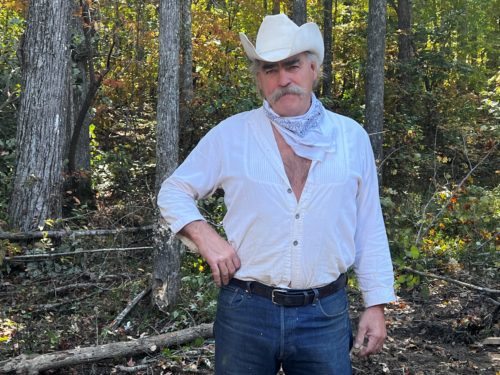
Chris Cocoles Congrats on a great book, Marty. Homesteading has been such a big part of your life, so was this a project that you’ve been wanting to write for a while now?
Marty Raney One episode of Homestead Rescue takes a little over a week to film, but there are only 52 weeks in one year. So, in my quest to help as many as I can to attain a simpler, less stressful and healthier life, the notion to write a book about homesteading began percolating.
CC In the book’s introduction you really captured the importance of being prepared for emergencies such as the 7.2 Alaska earthquake in 2018. I live in an area at risk of a massive earthquake (Seattle) and I don’t feel like I’m prepared when the big one does hit. Are too many of us not ready to endure a disaster like that?
MR There are nearly nine million people living in New York, four million in LA, three million in Chicago. Add to that, 10 more cities with populations hovering around one million people (Seattle has 750,000). When I fly over these cities on my way to some rural homestead, I’m concerned how these sprawling, teeming masses will survive when faced with an unannounced catastrophe: i.e. floods, power outages, contaminated water supplies, hurricanes, earthquakes, ice storms, a terrorist attack or – God forbid – a new virus or strain that goes global. In 2018, a far less populated place, Alaska, experienced a 7.2 earth- quake. I was there and realized that even hardy Alaskans were not prepared. In a matter of hours, gas stations had long lines of vehicles, all generators disappeared from the hardware stores, as did the bulk of the food from grocery store shelves. It’s been four years since that event. The question remains: Are Alaskans any more prepared for the next quake, which could very likely be bigger? Now, imagine a 7.2 earthquake hitting any of the aforementioned cities. The point: Bad days are coming. The question is: Who is prepared?
CC We talked a few years back for a story on Discovery’s Homestead Rescue and you told me how difficult your early days in Alaska were. How much did those struggles mold you into what you are now? MR I grew up remotely, outside of North Bend, Washington, quit school, left home at 16. In the (1970s) I worked as a logger in Southeast Alaska – Ketchikan, Prince of Wales and Sitka. It was tough, dangerous work. We went from those floating logging camps to a homestead in Haines, Alaska. No power, no water, extremely remote, surrounded by a high population of brown bears. If you can homestead in Alaska, you can homestead anywhere.
CC Obviously you’ve helped a lot of in-over-their-head homesteaders around the Lower 48 figure it out. But Alaska is something altogether different. Is homesteading in the Last Frontier not for everyone?
MR I would say the hardest homestead I’ve ever worked on is my own. Off-grid, no road access, dangerous rivers, landslides, flooding, heavy snow, 35-below temperatures, seven-month-long winters, windstorms, formidable predators, and a house fire where we lost every single thing we own, and that rugged and challenging homestead is our home. However, most people are likely to choose an extreme environment and location to build their homestead. It really doesn’t matter where one chooses to live, as the fundamental reasons why we choose this life are what really matters. The dream of becoming self-reliant, self-sufficient and independent is well within the reach of anyone who truly desires those freedoms rural life offers.
CC How much do you think your family’s work on Homestead Rescue opened up a lot of eyes about that lifestyle and made it more visible to those who want to do it? MR I’ve long lost track of the number of people from all walks of life who have approached me saying they’ve left the troubled, concrete jungle behind and are now living a safer, simpler life in rural America inspired by Homestead Rescue’s mission. The book is selling well. A groundswell is sweeping across North America, as people from all walks of life are honestly evaluating their quality of life in these troubled, crowded cities. Homestead Rescue inspires people to take those first few calculating steps to a simpler, less stressful, healthier life of independence. True; this lifestyle may not be for everyone, but I honestly believe that anyone can do it if they’re willing to work hard to make their dream come true. Homestead Rescue helps those contemplating homesteading avoid the costly and disheartening pitfalls that many on the show have unfortunately encountered.
CC The book excerpt we’re running talks about the benefits of eating wild game meat like moose. Do Alaskans just have it better than most of us in having access to those organic food sources?
MR Subsistence is a way of life for many Alaskan families, including my own. Each year, every member of my family catches their limit of fresh salmon. We also do an annual moose hunt. Access to these animals is tough. Packing out and processing these animals is even tougher. So, while Alaska has its share of wild game, as with all things homesteading, it’s hard work. We have a freezer full of organic, untainted meat and seafood – as well as wild Alaskan berries.
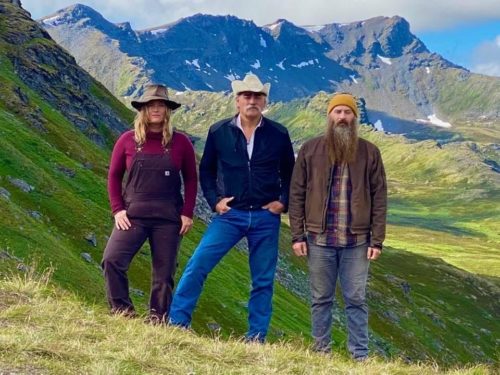
CC As a dad, how excited have you been that kids Misty and Matt have been such a big part of Homestead Rescue and selling the idea of living this life that you’re so passionate about?
MR If I had to sum up Homestead Rescue with just one word, it would be “work.” If I had to sum up how hard Misty and Matt work on Homestead Rescue with just one word, I would say “proud.” They are both smart, creative and sensitive when it comes to the homesteading families we assist. In all the episodes of Homestead Rescue, I can’t recall there ever being a day where the weather was so bad that we shut down. But trust me, we’ve all worked in our fair share of bad weather while willingly helping others. Snowstorms, ice storms, below-zero temperatures, lightning storms, floods, mud, muck, and mayhem! And not to mention something that’s 10 times worse than all this weather put together. And what would that be? Working side by side with me. Every. Single. Day. Whew! Thank God they’re tough and they take after their mother [Marty’s wife Mollee].
CC It looks like another son, Miles, and his girlfriend live in a yurt on your homestead property. Do you think your homesteading has really brought this family closer together?
MR Our 40-acre homestead in Alaska is as beautiful as it is rugged. Miles and his girlfriend Cara were actually the first ones to set up a yurt and live on the property. A few years later, after building the “Cliffs of Insanity” road, which opened up 20 acres of previously inaccessible property, they moved the yurt to a higher location. Misty and her husband, Maciah, built a beautiful log cabin down by the river completely out of the dead and dying beetle-killed spruce trees. Matt and Katie have also picked out a stunning future building site in yet another secluded location. Nothing says homesteading more than family. And in this family, homesteading is a way of life.
CC Of all the tips and advice that this book offers, can you share one piece of information that anyone who wants to get involved in homesteading should know? MR Water is life, and without it your plants, livestock, family and dream of homesteading will struggle to survive. On more than one homestead, I’ve seen a coyote chasing a jack rabbit and they were both walkin’. From coyotes to cactus, everything needs water. “Dew” diligence can make or break a homesteader and a dream.
CC You’ve helped make a lot of people’s lives easier and more manageable through your TV show and now this book. Is there anything else you want to accomplish? Maybe expand your music career?
MR All of our instruments burned up in the house fire, but since the fire we built a log home out of the beetle-killed trees and helicoptered in a grand piano. I’ve replaced my classic Alaskan-shaped guitar with a new one and have been writing songs for a new album. We are currently filming Season 10 of Homestead Rescue. Some people have an adventure of a lifetime, but in Alaska, I’ve had a lifetime of adventure. ASJ

